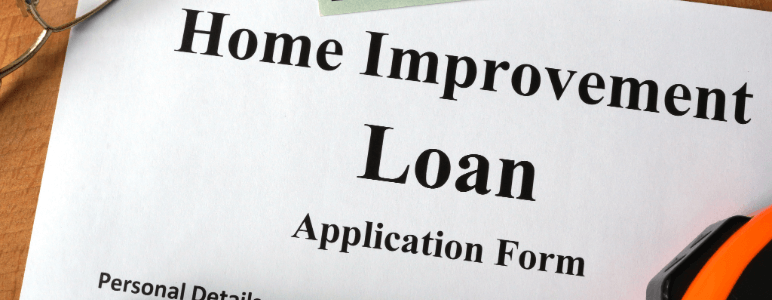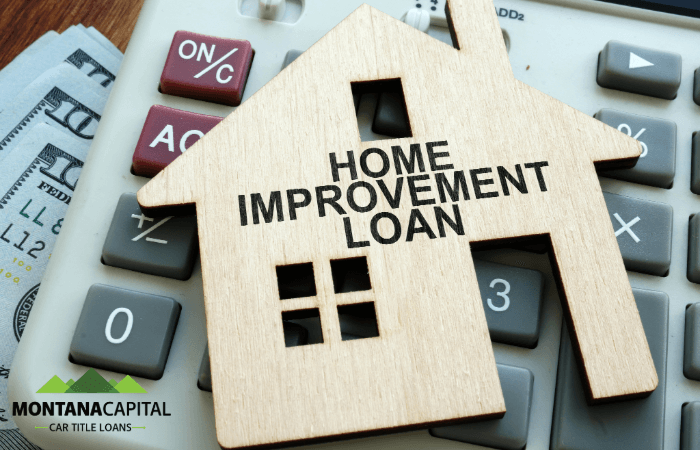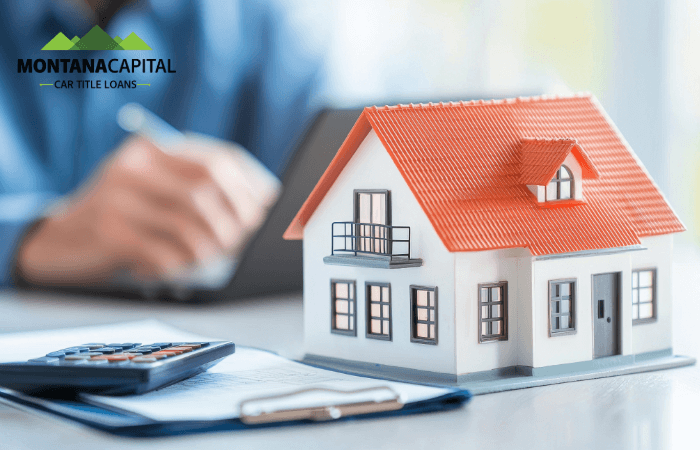
Written by: Shir Amram
Owning a home is a wonderful experience where you create memories, relax and take pride in your space. Keeping your home in good shape isn’t always cheap and can be expensive. Repairs, upgrades and maintenance can add up fast.
If you have fair or bad credit and you need a loan to cover these costs it can be tricky. The good news is home improvement loans are still an option even with bad credit. While borrowing a personal loan with a low credit score has its challenges, checking offers to find the best home improvement loans can help you get it done.
Key Takeaways
- Even with a credit score below 600 you can still qualify for a home improvement loan, giving you access to funds you need same business day
- Some home improvement loans can go as high as $100,000, providing financial support for major renovations or repairs
- Home repair loans cover costs like bathroom remodels, landscaping, and other home improvements projects
- Planning a home improvement project takes time so consider every financing option before committing
- Find a cosigner, get prequalified, and boost your credit are ways to improve your loan approval chances
- Understand and be informed origination fees, loan process, monthly payments and loan terms
What Is a Home Improvement Loan?
A home improvement loan, sometimes referred to as a home renovation or home repair loan, is an unsecured personal loan. It provides a lump sum to cover the cost of renovations, repairs, or upgrades. You repay the loan in fixed monthly payments with interest, making it easier to budget your project costs.
Usually lenders often offer quick approval and same day funding. Personal loan lenders provide various financing options for home improvement loans with terms that can vary based on your credit history, income, and loan amount.
How Much Can I Borrow with a Home Improvement Loan?
The amount you borrow depends on your credit, loan type and lender’s limits. Depending on the lender, loan amounts can go up to $100,000 making them a smart choice for home repairs. If you don’t get approved for the amount you need you can consider using a cosigner to up your chances.
Always consider the monthly payment, loan terms, and interest rates that will impact the affordability of the loan.
What Can I Use a Home Improvement Loan for?
A home improvement loan can be used for small home repairs or big remodels. They cover many different types of home projects that can help you get your home looking the way you want it. Also if you have loan funds leftover you can use them for other bills or use it to pay off the loan faster.
Here are Some Examples of Upgrades You Can Make to Your House:
- Bathroom remodel
- Kitchen remodel
- Finishing a basement
- New Windows
- Landscaping
- Adding a new deck
- Adding a ADU (Accessory Dwelling Unit)
- Full restorations
How To Get a Home Improvement Loan with Bad Credit
You can still get a home improvement loan with bad credit. Lenders look at more than just your credit score—they also consider your job history and income. A steady job and reliable income can improve your chances of approval.
How to Apply for a Home Improvement Loan
- Check your credit report – Before applying, know where your credit score and credit history stand. A higher score may mean better loan terms.
- Compare lenders – Different lenders offer different interest rates and repayment options. Compare multiple lenders to see which is the best fit.
- Pick the best offer – Choose a loan that fits your budget and repayment ability. Ensure it aligns with your financial situation.
- Complete your application – Submit the necessary forms and documents such as proof of income, employment details and identification
- Get approved & receive funds – Once your information is reviewed and approved the loan will be disbursed. Some lenders offer same-day funding.
Tips To Improve Your Loan Approval Odds Before Borrowing
- Boost Your Credit Score – Pay bills on time, lower credit card balances, and dispute errors. Keep credit use below 30%.
- Get Prequalified – Check estimated rates with a soft credit check that won’t affect your score.
- Consider Government Loans – FHA Title 1 and 203(k) loans can help finance repairs with lower credit requirements.
- Keep Old Credit Cards Open – Closing paid-off cards can lower your score. Use them for small, regular purchases.
- Find a Co-Signer – A creditworthy co-signer improves approval odds but shares responsibility for repayment.
- Read Reviews – Look for bad credit-friendly lenders, read reviews, and check credit union options.
- Maintain old accounts– Keeping old credit accounts open can help build a longer credit history helping your credit score.
How To Choose the Right Home Improvement Loan with Fair or Poor Credit?
Choosing a home improvement loan is easier when you compare options. Reading reviews can help spot any red flags that you may want to avoid.
Consider the Following When Choosing:
- Interest Rates- Lower rates mean lower overall costs.
- Loan Terms- Short loan terms have higher payments but less interest over time.
- Monthly Payments- Make sure payments fit your budget and you can afford paying.
- Funding Time- If you need fast quickly look for a lender that offers same day funding.
- Fees- Compare origination fees, late fees and early payoff penalties.
Home Improvement Loan Alternatives for Bad-Credit Borrowers
If traditional home improvement loans aren’t an option for you you can explore some other options. Borrowing a personal loan isn’t the only way to cover the cost of home improvements:
- Credit Cards: Quick option but costly if not paid off in full by due date
- Home Equity Loan: Use home as collateral but may take weeks or months for approval
- FHA 203(k) Loan: Lots of paper work make it less flexible for home repairs
- Contractor Financing: Some contractors offer in house financing but may be expensive
- Family Loan: A good option if both parties agree on clear terms
- Secured Loan: Requires collateral such as a car or valuable asset
Types of Home Improvement Loans for Bad Credit
If you have bad credit you still have the option for financing home improvements. The best loan depends on your financial situation and project needs. Here are the most common types of options each with its own benefit and risk:
Personal Loan
Personal loans are unsecured meaning no collateral is required. Ideal for quick access to funds for home improvement projects but may come with higher interest rates. They are easier to qualify for with bad credit and typically range from $1,000-$50,000.
Home Equity Loans
Borrow against your home’s value with fixed interest rates and repayment terms of 10 to 30 years. Best for large renovations but puts your home at risk if you miss payments.
Cash-Out Refinance
Replaces your current mortgage with a larger loan, using the extra cash for home improvements. Usually requires at least 20% equity. May lower interest rate but increases loan balance.
Pros and Cons of Bad Credit Home Improvement Loans
Getting a home improvement loan has its benefits and drawbacks consider the following:
| Pros | Cons |
| Helps cover home repairs and upgrades if no other options | Higher interest rates, making the loan more expensive |
| Makes your home more comfortable and functional | Stricter loan terms, shorter repayment times and higher monthly payments |
| Some loans may offer tax benefits if used for approved home repairs | Home upgrades may not always increase your home’s value |
| Quick access to funds allowing you to take care of any urgent repairs | Adds more debt which can affect your finances |
In Conclusion
Getting a home improvement loan with bad credit isn’t always easy, but it’s possible. There are options available, whether it’s a personal loan, home equity loan, or government-backed program. By improving your credit, exploring different lenders, and considering alternatives, you can find a loan that works for you.
Bad credit doesn’t have to stop you from making your home a better place. With patience, research, and the right plan, you can get the funding you need to complete your home improvement projects and improve your living space.
If you’re considering a home improvement loan, fill out our request form today to see how much you qualify for—there’s no risk and no obligation!
Common Questions
Can I Get a Home Improvement Loan With a Credit Score Below 600?
Yes, you can obtain a home improvement loan with a credit score below 600, as many lenders provide options for borrowers with bad credit scores. However, be prepared for potentially higher interest rates and stricter loan terms due to being a higher risk borrower. Each lender has its rules for what minimum credit score they accept.
Are There No Credit Check Home Improvement Loans For Bad Credit?
Yes, there are few no credit check loan options available to borrowers with bad credit. However, it is recommended to only use these types of loans as a last resort. The loans tend to be smaller loan amounts with a shorter payback period so they may not be the best option for a large project.
Is It Hard to Get Approved For a Home Improvement Loan?
If you have bad credit, yes, it may be difficult to get approved but not impossible. There are lenders who specifically work with people with bad credit. Specific requirements can differ per lender so it’s important to compare options.
Additionally, knowing the minimum credit score requirements required by different lenders is crucial, as some may accept scores as low as 560. Other lenders may require a score of around 600.
How Do People Pay For Home Improvements?
On average, a renovation of a small home might cost between $15,000 to $45,000. For smaller projects you might be able to pay with savings. People who have a lot of equity in their home might be better off with a Home equity loan or a cash out refinance. However, if you want to avoid putting your home at risk a home improvement loan would be a better option.

Written by
Shir Amram
Shir Amram is a senior loan officer at Montana Capital Car Title Loans. With over 10 years of experience in the finance industry, Shir has been an asset in her role and has contributed significantly to our company’s success, Shir’s academic background in economics and financial knowledge helps us fulfill our education mission as she creates a valuable content to our blog.


